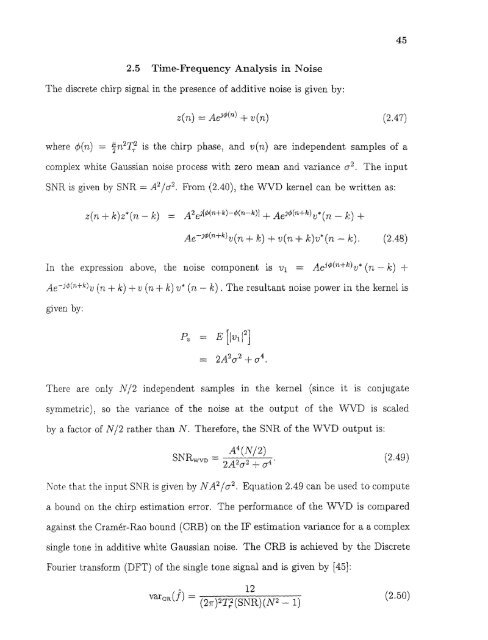Space/time/frequency methods in adaptive radar - New Jersey ...
Space/time/frequency methods in adaptive radar - New Jersey ...
Space/time/frequency methods in adaptive radar - New Jersey ...
You also want an ePaper? Increase the reach of your titles
YUMPU automatically turns print PDFs into web optimized ePapers that Google loves.
452.5 Time-Frequency Analysis <strong>in</strong> NoiseThe discrete chirp signal <strong>in</strong> the presence of additive noise is given by:is the chirp phase, and v(n) are <strong>in</strong>dependent samples of acomplex white Gaussian noise process with zero mean and variance a 2 . The <strong>in</strong>putSNR is given by SNR = A²/σ² . From (2.40), the WVD kernel can be written as:In the expression above, the noise component isgiven by:The resultant noise power <strong>in</strong> the kernel isThere are only N/2 <strong>in</strong>dependent samples <strong>in</strong> the kernel (s<strong>in</strong>ce it is conjugatesymmetric), so the variance of the noise at the output of the WVD is scaledby a factor of N/2 rather than N. Therefore, the SNR of the WVD output is:Equation 2.49 can be used to computea bound on the chirp estimation error. The performance of the WVD is comparedaga<strong>in</strong>st the Cramér-Rao bound (CRB) on the IF estimation variance for a a complexs<strong>in</strong>gle tone <strong>in</strong> additive white Gaussian noise. The CRB is achieved by the DiscreteFourier transform (DFT) of the s<strong>in</strong>gle tone signal and is given by [45]:
















